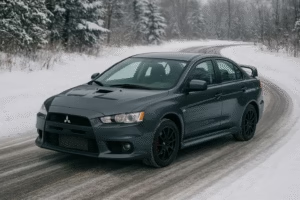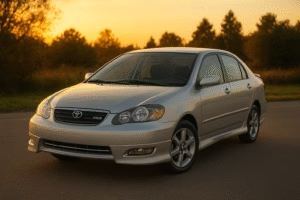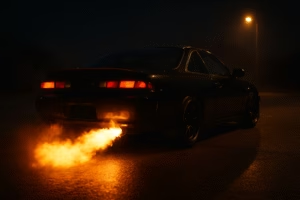There’s something hypnotic about watching a car shoot flames out of its exhaust. It’s pure chaos, pure spectacle — like the car is angry at the air itself. Whether it’s a turbocharged JDM beast or an old-school V8 muscle car, nothing gets a crowd going like a sudden burst of fire lighting up the night.
But what’s actually going on when a car spits flames? Is it power, tuning magic, or just a little automotive mischief? Let’s pop the hood on this hot topic.
Why Cars Shoot Flames
When an engine runs rich — meaning there’s too much fuel and not enough air — some of that unburned fuel sneaks into the exhaust. If the exhaust is hot enough, that extra fuel ignites, and boom: instant fireball.
You’ll usually see this in:
- Turbocharged cars, especially when lifting off the throttle between shifts.
- Performance-tuned engines, where timing and fueling are intentionally adjusted.
- Race cars and track builds, running free-flowing exhausts with no catalytic converters to tame the burn.
It’s not magic. It’s chemistry — just with a bit more attitude.
Not All Fire Is Equal
Some cars naturally “burp” small flames under aggressive driving, while others are tuned specifically to do it. Then there’s the show crowd — the ones using flame kits that literally inject fuel into the exhaust and ignite it with a spark plug. Those setups are for visual impact only and can melt bumpers faster than you can say “insurance claim.”
A properly tuned performance car might toss out the occasional flame on a hard rev or during deceleration — it’s usually a byproduct of high-performance tuning, not the main goal.
Is It Bad for the Car?
Short answer: kinda.
Those fiery pops look cool, but the heat can damage exhaust valves, catalytic converters, and sensors. It’s like letting your car smoke a pack of cigarettes after every pull. Do it too often, and something’s going to give.
If you’re running a car that flames naturally due to tuning or race fuel, that’s one thing. If you’re forcing it for clout on Instagram, that’s another story — and usually an expensive one.
Why People Love It Anyway
Because it’s raw. It’s the sound, the heat, the smell of unburned fuel and adrenaline. Flame-throwing cars are loud, unapologetic, and a little reckless — just like car culture itself. It’s mechanical rebellion, the kind of thing that makes people turn their heads even if they don’t understand what’s happening.
A Quick Reality Check
Before you go trying to make your daily driver spit fire, remember this: not all fire is good fire. A real backfire or misfire means something’s off — timing, fueling, or ignition. If it happens unintentionally, it’s a sign to check your tune, not flex on TikTok.
Final Thoughts
Flame-throwing cars will always have a place in car culture — from night meets to drag strips to JDM legends lighting up the sky. It’s reckless, it’s dramatic, and it’s undeniably cool.
Just remember: every flame that bursts out of your tailpipe is a little bit of money going up in smoke. Enjoy the spectacle, respect the engineering, and keep the fire under control.
Join Our Automotive Community!
Subscribe to our YouTube channel




